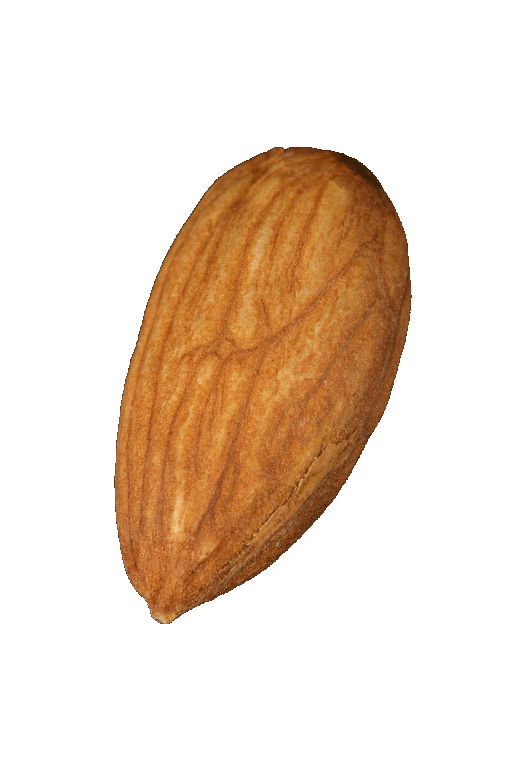 | ||
Similar Almond, Peanut, Walnut, Cashew, Hazelnut | ||
A nut is a fruit composed of a hard shell and a seed, which is generally edible. In a general context, however, a wide variety of dried seeds are called nuts, but in a botanical context, there is an additional requirement that the shell does not open to release the seed (indehiscent). The translation of "nut" in certain languages frequently requires paraphrases, as the word is ambiguous.
Contents
- Botanical definition
- Culinary definition and uses
- Constituents
- Health effects
- Other uses
- Historical usage
- References
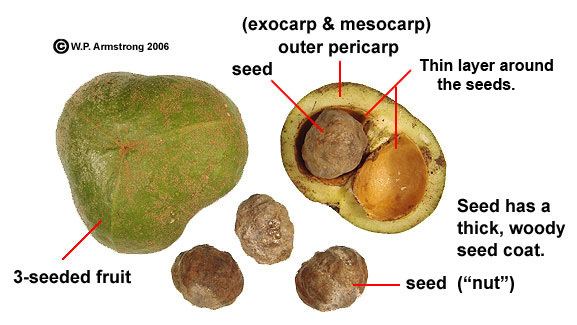
Most seeds come from fruits that naturally free themselves from the shell, unlike nuts such as hazelnuts, chestnuts, and acorns, which have hard shell walls and originate from a compound ovary. The general and original usage of the term is less restrictive, and many nuts (in the culinary sense), such as almonds, pecans, pistachios, walnuts, and Brazil nuts, are not nuts in a botanical sense. Common usage of the term often refers to any hard-walled, edible kernel as a nut.
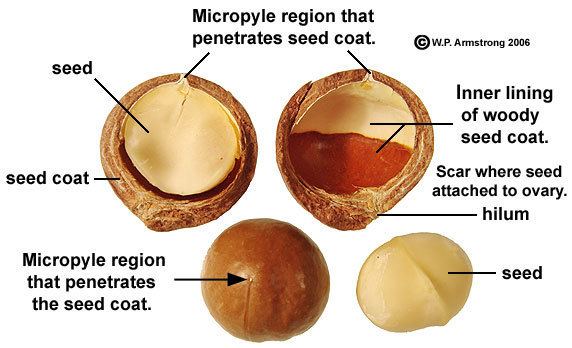
Botanical definition
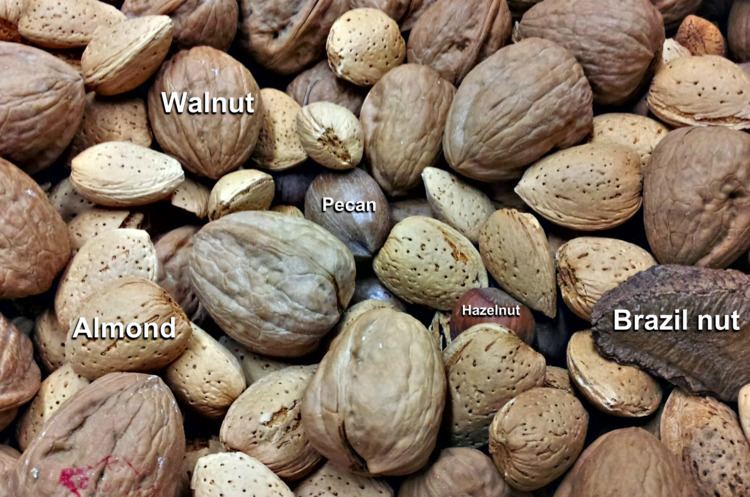
A nut in botany is a simple dry fruit with one seed (rarely two) in which the ovary wall becomes increasingly hard as it matures, and where the seed remains unattached or free within the ovary wall. Most nuts come from the pistils with inferior ovaries (see flower) and all are indehiscent (not opening at maturity). True nuts are produced, for example, by some plant families of the order Fagales.
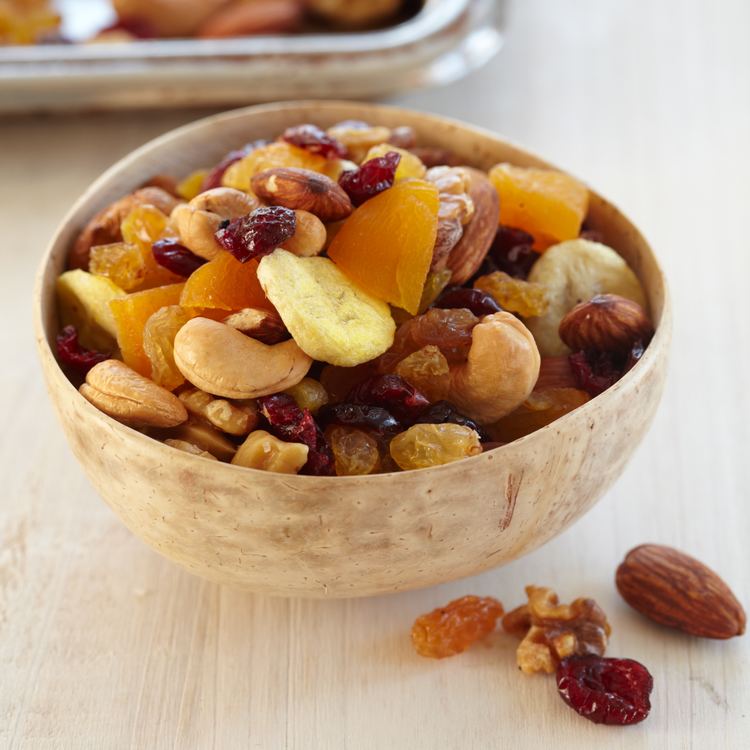
A small nut may be called a "nutlet". In botany, this term specifically refers to a pyrena or pyrene, which is a seed covered by a stony layer, such as the kernel of a drupe. Walnuts and hickories (Juglandaceae) have fruits that are difficult to classify. They are considered to be nuts under some definitions, but are also referred to as drupaceous nuts. "Tryma" is a specialized term for hickory fruits.
In common use, a "tree nut" is, as the name implies, any nut coming from a tree. This most often comes up regarding allergies, where some people are allergic specifically to peanuts, others to a wider range of nuts that grow in trees.
Culinary definition and uses
A nut in cuisine is a much less restrictive category than a nut in botany, as the term is applied to many seeds that are not botanically true nuts. Any large, oily kernels found within a shell and used in food are commonly called nuts.
Nuts are an important source of nutrients for both humans and wildlife. Because nuts generally have a high oil content, they are a highly prized food and energy source. A large number of seeds are edible by humans and used in cooking, eaten raw, sprouted, or roasted as a snack food, or pressed for oil that is used in cookery and cosmetics. Nuts (or seeds generally) are also a significant source of nutrition for wildlife. This is particularly true in temperate climates where animals such as jays and squirrels store acorns and other nuts during the autumn to keep from starving during the late autumn, all of winter, and early spring.
Nuts used for food, whether true nut or not, are among the most common food allergens.
Some fruits and seeds that do not meet the botanical definition but are nuts in the culinary sense are:
Constituents
Nuts are the source of energy and nutrients for the new plant. They contain a relatively large quantity of calories, essential unsaturated and monounsaturated fats including linoleic acid and linolenic acid, vitamins, and essential amino acids. Many nuts are good sources of vitamin E, vitamin B2, folate, fiber, and the essential minerals magnesium, phosphorus, potassium, copper, and selenium. Nuts are most healthy in their raw unroasted form,because roasting can significantly damage and destroy fats during the process. Unroasted walnuts have twice as many antioxidants as other nuts or seeds. It is controversial whether increasing dietary antioxidants confers benefit or harm.
This table lists the percentage of various nutrients in four unroasted seeds.
Health effects
People who eat nuts regularly have better health outcomes. This includes less coronary heart disease (CHD), less cancer, and lower chances of death.
Nuts were first linked to protection against CHD in 1993. Eating various nuts such as almonds and walnuts can lower serum low density lipoprotein (LDL) concentrations. Although nuts contain various substances thought to possess cardioprotective effects, their omega 3 fatty acid profile is at least in part responsible for the hypolipidemic response. Nuts have a very low glycemic index (GI) due to their high unsaturated fat and protein content and relatively low carbohydrate content. Consequently, dietitians frequently recommend that nuts be included in diets of people with insulin resistance such as Type 2 diabetes mellitus. One study found that people who eat nuts live two to three years longer than those who do not. However, this may be because people who eat nuts tend to eat less junk food.
Other uses
The nut of the horse-chestnut tree (Aesculus species, especially Aesculus hippocastanum), is called a conker in the British Isles. Conkers are inedible because they contain toxic glucoside aesculin. They are used in a popular children's game, known as conkers, where the nuts are threaded onto a strong cord and then each contestant attempts to break their opponent's conker by hitting it with their own. Horse chestnuts are also popular slingshot ammunition.
Historical usage
Nuts, including acorns, pistachios, prickly water lillies, water chestnuts, and wild almonds, were a major part of the human diet 780,000 years ago. Prehistoric humans developed an assortment of tools to crack open nuts during the Pleistocene period. The Aesculus californica (also known as the California buckeye or California horse-chestnut), was eaten by the Native Americans of California during famines, after the toxic constituents were leached out.
